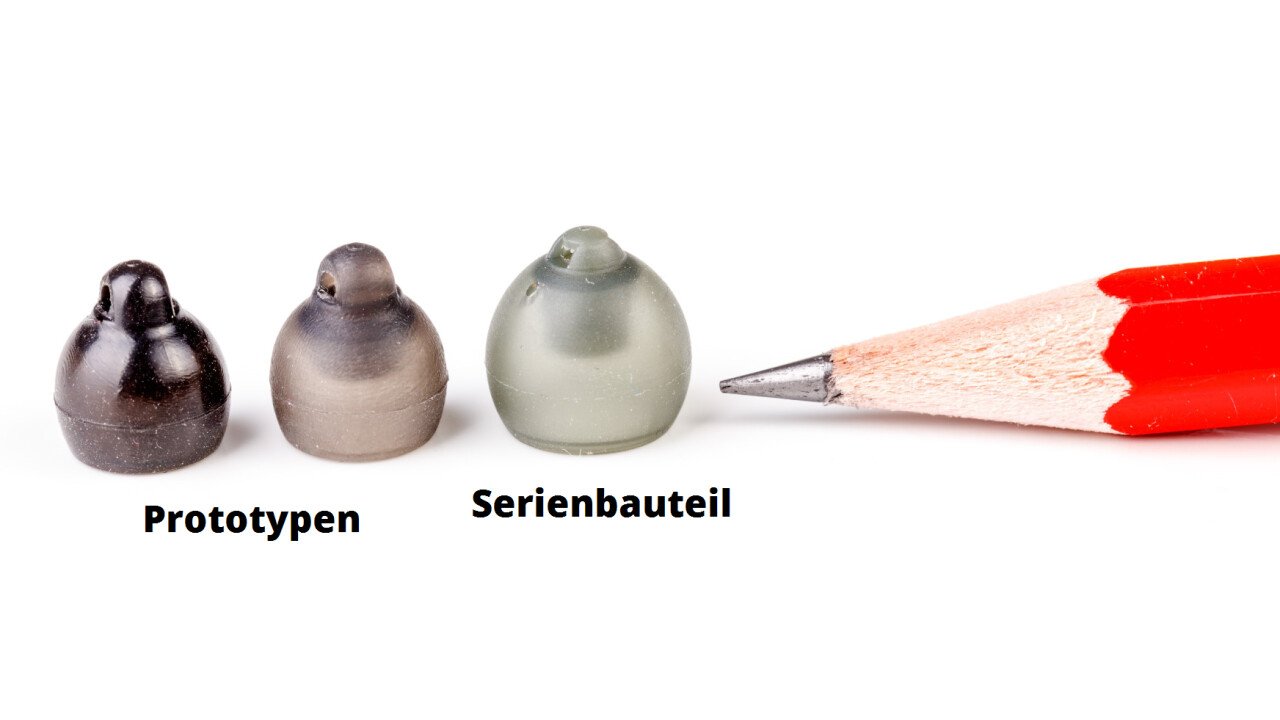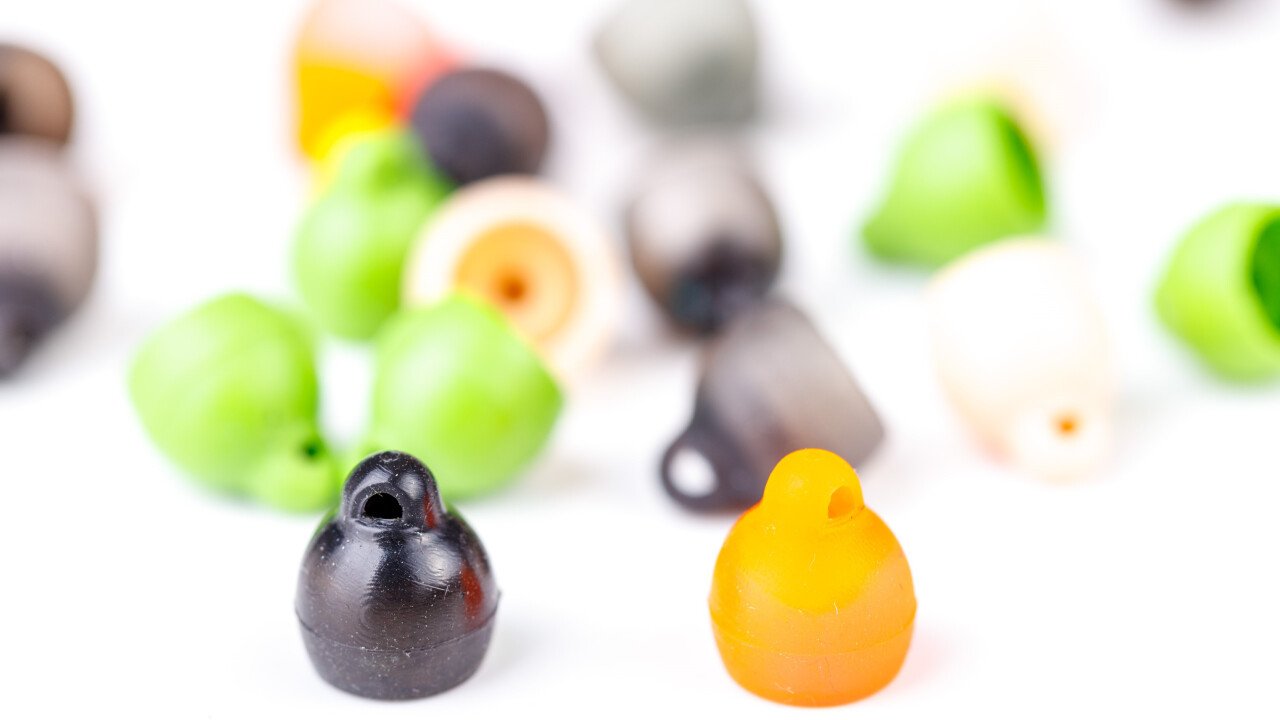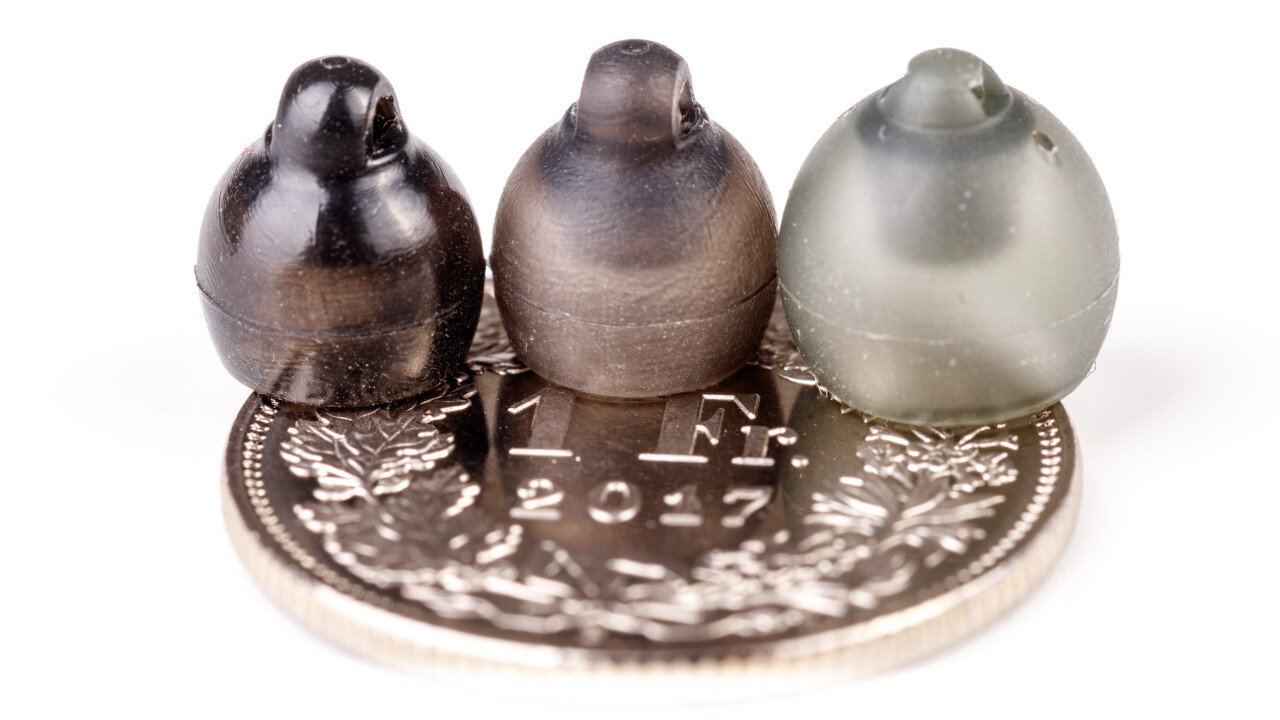When developing new types of in-ear silicone shells, Sonova previously had to accept waiting times of up to six weeks for new prototypes. With Torson Injex' additive tooling process, this time has now be reduced to a few days.
Silicone as a challenge
Many hearing aids have a small umbrella-shaped shield on the loudspeaker sitting in the ear canal, which fixes the loudspeaker within the ear canal. These shields, also called domes, are made of silicone, as silicone ensures optimal wearing comfort and excellent biocompatibility.
In the prototype stage however, silicone poses a major challenge as the complex and very thin-walled geometries can only be produced using mold-based methods. Even comparatively simple pressing tools require at least four to six weeks production time. Such long waiting times hinder efficient development and should be avoided if possible.
Collaboration between Sonova and Torson Injex
In close cooperation, Sonova and Torson Injex have developed an injection molding process that enables the production of silicone prototypes within a very short time.
One of the cornerstones of this new workflow is the additive tool production developed at Torson Injex, which was originally developed for thermoplastics and adapted for silicone-based materials for this project. The production of the individual tool components using 3D printing keeps initial costs and lead times low.
There is also an agile mixing and injection system, which is particularly suitable for Room Temperature Vulcanization (RTV) silicones, but can also be used for Liquid Silicone Rubber (LSR) type silicones.
With this process, the lead time for prototypes was reduced from six weeks to three days. It is best suited for batch sizes ranging from 10 to 100 pieces and silicones with hardnesses from 25 to 60 Shore A are available in a wide variety of colors.
Properties (almost) like a series component
A direct comparison was made between a series component and a prototype manufactured by Torson Injex. The required pull-off forces and the sealing behavior at the loudspeaker were compared. This investigation showed that the mechanical properties of the prototypes were highly similar to those of the series component and meaningful mechanical tests could be carried out with them.


